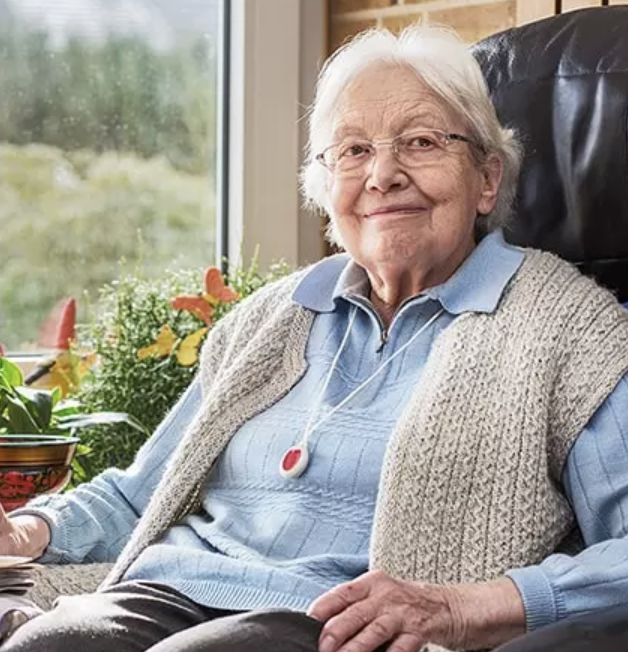
Age spots, also referred to as liver spots or solar lentigines, are flat, brown areas of increased pigmentation that often make an unwelcome appearance on sun-exposed skin as we age. These harmless but visually bothersome blemishes are primarily a result of prolonged sun exposure and can affect our face, hands, arms, and other areas. If you're looking to maintain radiant, even-toned skin and minimize the risk of age spots, here's your guide to prevention and protection.
Understanding age spots
Find YOUR ideal care home NOW!
Age spots develop due to the accumulation of melanin, the pigment responsible for our skin color. They typically appear in areas that have received the most sun exposure over the years. While age spots are generally benign, they can affect one's self-esteem and overall skin appearance.
Tips to avoid age spots
1. Sun protection
The primary culprit behind age spots is ultraviolet (UV) radiation from the sun. Protecting your skin from the sun's harmful rays is the most effective way to prevent age spots. Here's how:
Sunscreen: Regularly apply a broad-spectrum sunscreen with at least SPF 30 to all exposed skin, even on cloudy days. Reapply every two hours when outdoors.
Protective clothing: Wear long-sleeved shirts, wide-brimmed hats, and sunglasses to shield your skin from direct sunlight.
Seek shade: Stay in the shade during peak sun hours, typically between 10 a.m. and 4 p.m.
2. Sunless tanning
Instead of tanning under the sun or in tanning beds, opt for sunless tanning products. These self-tanning lotions or sprays can provide a sun-kissed glow without the harmful effects of UV radiation.
3. Skin care
A consistent skincare routine can help maintain skin health and reduce the risk of age spots:
Antioxidants: Incorporate antioxidant-rich serums or moisturizers into your skincare regimen. Antioxidants can help protect the skin from oxidative damage caused by UV radiation.
Exfoliation: Gentle exfoliation can help remove dead skin cells and improve skin texture. Use products with alpha hydroxy acids (AHAs) or consult a dermatologist for appropriate exfoliation methods.
4. Skin protection
If you need to be outdoors for extended periods, consider using a physical barrier like zinc oxide or titanium dioxide sunblock, which physically blocks UV radiation from penetrating the skin.
5. Regular skin checks
Keep an eye on your skin and consult a dermatologist if you notice any new or changing spots. Early detection and treatment can be essential in managing skin conditions.
6. Medical procedures
For those with existing age spots, various medical treatments, such as laser therapy, chemical peels, or cryotherapy, can help reduce their appearance. Consult with a dermatologist to determine the most suitable approach.
Medical Treatments for Existing Age Spots
| Treatment | Description |
|---|---|
| Laser Therapy | Laser treatment targets and reduces the appearance of age spots by breaking down the excess melanin in the skin. |
| Chemical Peels | Chemical peels use exfoliating acids to remove the top layer of skin, helping to fade age spots and improve skin texture. |
| Cryotherapy | Cryotherapy involves freezing the age spots with liquid nitrogen to remove them, which helps in reducing their appearance. |
Age spots are a common concern, but with proper sun protection, skincare, and early intervention, you can enjoy radiant and unblemished skin as you age. By taking these preventive steps, you can minimize the risk of developing age spots and maintain skin that reflects your vitality and well-being.
FAQ:
What are age spots?
Age spots are dark spots on the skin caused by the accumulation of melanin, often due to prolonged sun exposure. They typically appear in areas that have been exposed to the sun over time, such as the face, hands, and shoulders.
How can I prevent age spots?
To prevent age spots, use sunscreen with SPF 30 or higher, wear protective clothing, avoid sun exposure during peak hours, and incorporate antioxidant-rich skincare into your routine. Consider using sunless tanning products instead of tanning in the sun.
Can age spots be treated?
Yes, age spots can be treated with medical procedures such as laser therapy, chemical peels, or cryotherapy. These treatments can help reduce their appearance. It is best to consult with a dermatologist to determine the most suitable treatment for your skin.
How do I know if an age spot is something more serious?
Regularly check your skin for any new or changing spots. If an age spot changes in color, size, or shape, or if it becomes painful, it's important to consult with a dermatologist for evaluation.
Are there any natural ways to reduce age spots?
While natural remedies such as lemon juice or aloe vera may have mild lightening effects, they are generally not as effective as medical treatments. It's best to speak with a dermatologist about the most effective options for treating age spots.
Need help finding a care home?
Senior Home Plus offers free personalized guidance to help you find a care facility that suits your health needs, budget, and preferred location in the UK.
Call us at 0203 608 0055 to get expert assistance today.
Do you need a care home for yourself or your loved one?
Share this article :
Latest posts
You are looking for an establishment for your loved one ?
Get availability & prices
Fill in this form and receive
all the essential information
We would like to inform you of the existence of the opposition list for telephone canvassing.









